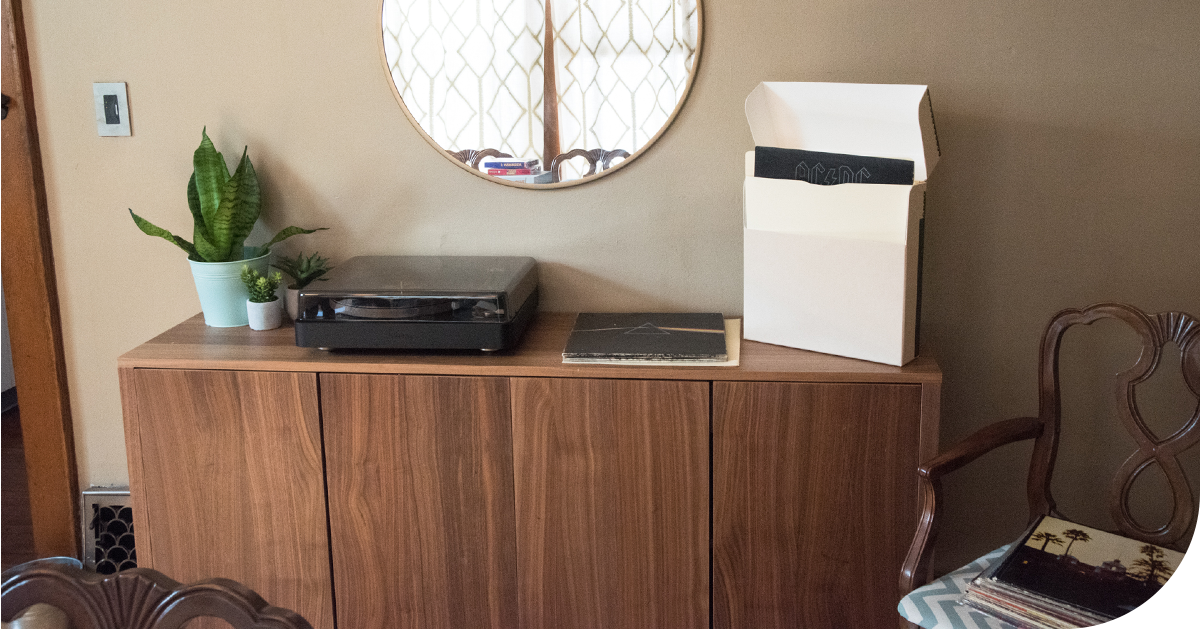Keeping analog audio collections in playable condition has become more important and popular in recent years. From vinyl records to cassette tapes and 8-track cartridges, maintaining these collections can be difficult. When stored in a low-temperature and -humidity environment, the lifespan of the recording can be significantly prolonged. Digitization of the audio recording is recommended to preserve the actual audio.
There are three main causes of damage and deterioration with analog audio artifacts.
- Mechanical – Damage can occur during playback due to improper equipment setup, insufficient training of the operator or mechanical failures. Items can become scratched, stretched or broken. Regularly service playback machines based on the frequency of use. All users should be trained on audio equipment before operating it.
- Handling – Damage can occur during inspection, cleaning, transfer or transport. Items can be scratched, cracked, broken or bent. Provide all objects with full support and avoid touching the audio track or playback area.
- Environmental or Chemical Breakdown – All formats will naturally deteriorate over time. However, damage can be accelerated by prolonged exposure to or continuous fluctuations of high temperature and humidity, reactions to cleaning products, or water and fungal growth. Poor housing will also allow objects to be vulnerable to these agents of deterioration.
Storage materials should be acid- and lignin-free and sturdy to protect objects from pollutant, water and light damage. Generally, do not keep recordings in their original housing materials for long periods of time; they are typically made from paper that will break down and become acidic after a period of time. Polyester sleeves and envelopes can provide protection from fingerprints and environmental pollutants.
Store objects in a stable, controlled environment, never near sources of heat or light (especially ultraviolet light) as plastics are adversely affected by both. Do not place heavy objects on top of recordings. Recordings should never be placed on top of each other. Shelve recordings vertically; do not stack "off vertical" or horizontally. Do not use shelving units where supports put more pressure on one area of the recording or where supports are more than four to six inches apart.
Keep storage areas at a consistently low temperatures and humidity. For long-term storage, keep the temperature between 46-53°F and 25-35% relative humidity. Do not store at or below freezing.
Vinyl Records
- Keep records free of any foreign matter deposits
- Do not interfile recordings of different sizes as smaller items may get lost or damaged, while larger items may be subjected to uneven pressure
- Remove shrink-wrap on LPs completely; shrink-wrap can continue to shrink, thus warping the disc
The plastics used in phonograph records will probably degrade over time but there are steps you can take to keep them playable as long as possible. The life of your records will be greatly affected by storage conditions. Store your records between 60 and 70 degrees, 45 to 65% RH, and avoid fluctuations. A polyethylene or polyester envelope will provide some protection against changes in the environment. Store records completely upright to avoid warping (use a spacer or other filler in a partially filled box to keep records vertical). Keep records clean for both storage and play. Lastly, handle records from the edges; never handle grooves with bare hands.
Audio Tapes
All audio tape should be wound and stored “tails-out,” that is, with the tape of the program’s beginning at the core of the reel and the end at its outer edge. Store all audio tapes vertically inside archival boxes. Corrugated polypropylene boxes will provide some protection from water damage.
For more information:
"Care, Handling and Storage of Audio Visual Materials." © Library of Congress.

